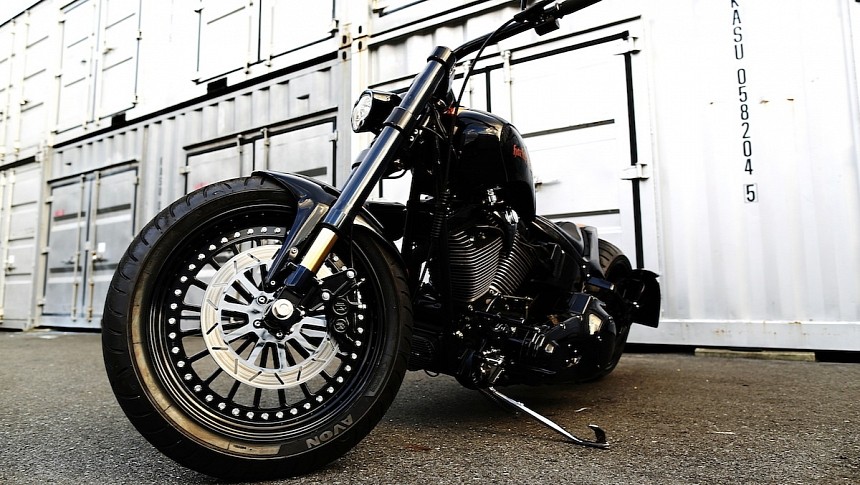No matter where you are on this planet of ours, you're probably aware of what bullfighting is all about. Made famous by the Spanish corrida, it's a sport (if it can be called that) not for the weak of heart or animal lovers.
There are several defining traits of corridas. One of the easiest to recognize is the “ole” that repeatedly comes out of spectators' chests every time a toreador manages to trick their animal opponents. Both the ole, and the bulls themselves, are sung by this custom Harley-Davidson build, put together in a place that has nothing to do with bullfighting (but has an even more violent past): Japan.
Either that, or we're dealing with a build meant to honor a Norwegian violinist and composer from the 1800s probably no one remembers today (Ole Bornemann Bull) - you can rarely tell why a specific name is chosen for modified Harleys, especially when it comes to the ones put together by the crew we're about to discuss in the lines below.
The Ole Bull, as the bike is called, started life as an unremarkable Softail. It stayed so until it crossed paths with the guys over at Japanese garage Bad Land, and was transformed into something that looks like it's out for matador blood (or a violin concert, depending on where you stand).
Black all over, except on purposefully selected places on its back, where a perfectly contrasting shade of orange was used, the Bull rides not on hooves, but on custom wheels supplied by Rick's Motorcycles.
The hardware at the front is supported by an AS Industries fork, and shielded from the elements, at least in part, by a Bad Land-made fender. The same happens at the rear, only this time the wheel in need of protection is 300 mm wide and supported by a wide swingarm. Front and back, Avon tires make the connection to the ground.
As usual when it comes to Bad Land projects, the shop itself made several of the bits and pieces that go on the two-wheeler in such a way for them to be unique. We're talking here about small elements like the headlight and handlebar, but also about the fuel tank, air cleaner and exhaust slapped onto the otherwise unmodified Harley engine.
These bits have been made to match elements supplied by the usual suspects of the Harley custom industry, like the Performance Machine front and foot controls or the motogadget speedometer.
The Harley-Davidson Ole Bull was shown for the first time in 2012, meaning enough time has passed for us to have lost track of it. You can still find it on the Bad Land website, but it lacks information on how much it cost to assemble.
Either that, or we're dealing with a build meant to honor a Norwegian violinist and composer from the 1800s probably no one remembers today (Ole Bornemann Bull) - you can rarely tell why a specific name is chosen for modified Harleys, especially when it comes to the ones put together by the crew we're about to discuss in the lines below.
The Ole Bull, as the bike is called, started life as an unremarkable Softail. It stayed so until it crossed paths with the guys over at Japanese garage Bad Land, and was transformed into something that looks like it's out for matador blood (or a violin concert, depending on where you stand).
Black all over, except on purposefully selected places on its back, where a perfectly contrasting shade of orange was used, the Bull rides not on hooves, but on custom wheels supplied by Rick's Motorcycles.
The hardware at the front is supported by an AS Industries fork, and shielded from the elements, at least in part, by a Bad Land-made fender. The same happens at the rear, only this time the wheel in need of protection is 300 mm wide and supported by a wide swingarm. Front and back, Avon tires make the connection to the ground.
As usual when it comes to Bad Land projects, the shop itself made several of the bits and pieces that go on the two-wheeler in such a way for them to be unique. We're talking here about small elements like the headlight and handlebar, but also about the fuel tank, air cleaner and exhaust slapped onto the otherwise unmodified Harley engine.
These bits have been made to match elements supplied by the usual suspects of the Harley custom industry, like the Performance Machine front and foot controls or the motogadget speedometer.
The Harley-Davidson Ole Bull was shown for the first time in 2012, meaning enough time has passed for us to have lost track of it. You can still find it on the Bad Land website, but it lacks information on how much it cost to assemble.

















